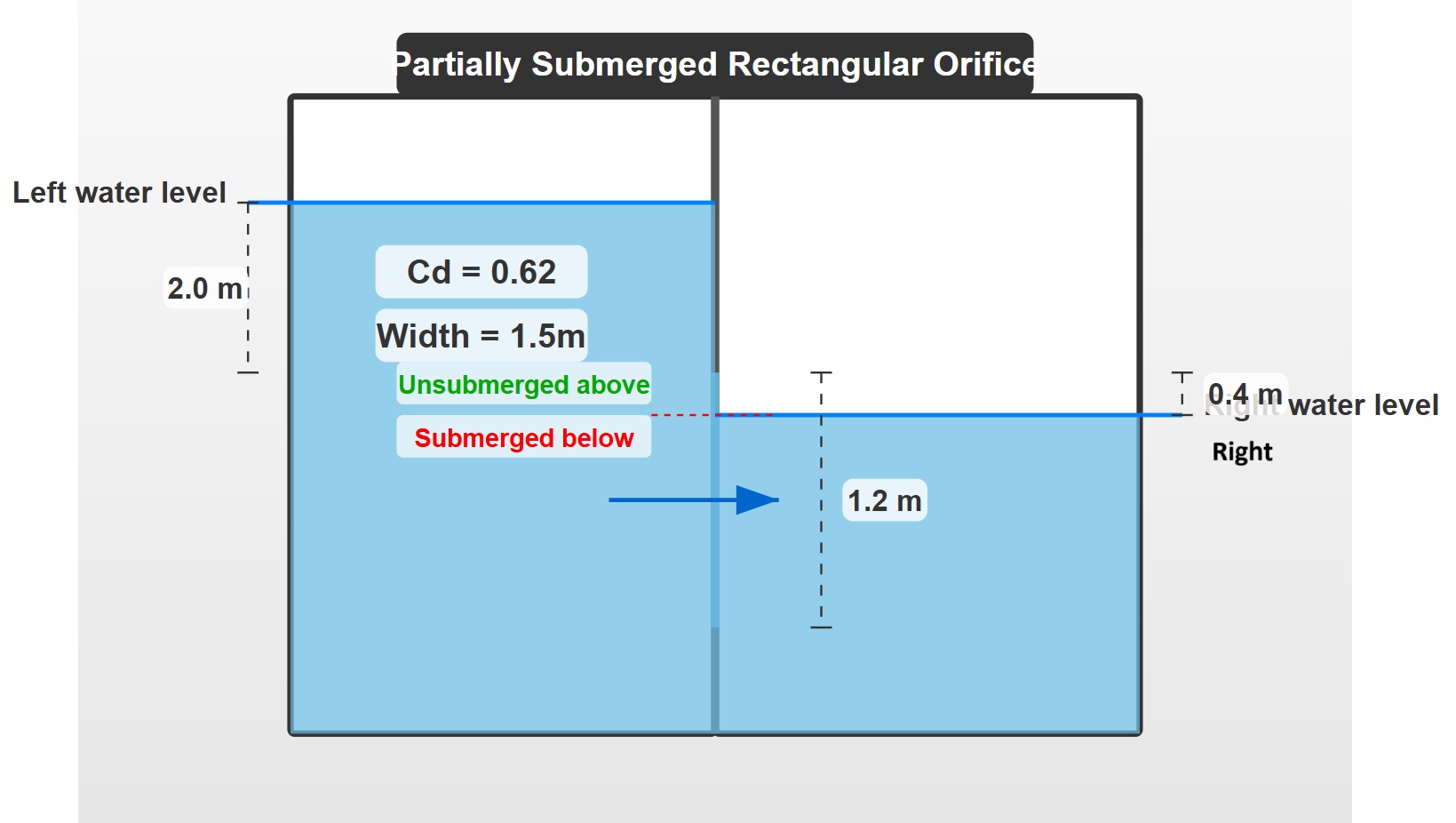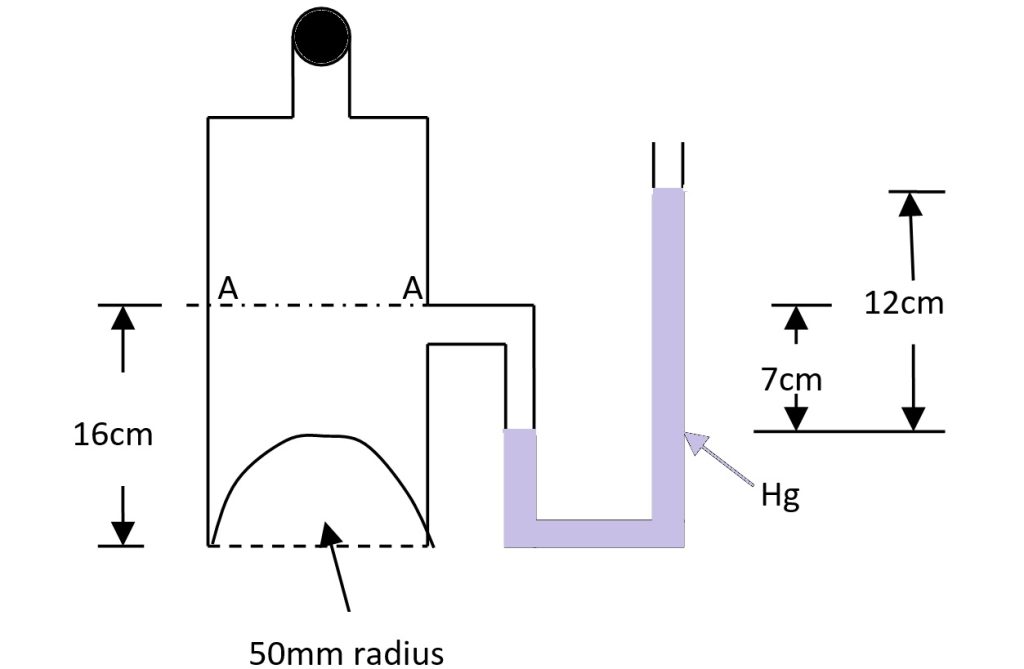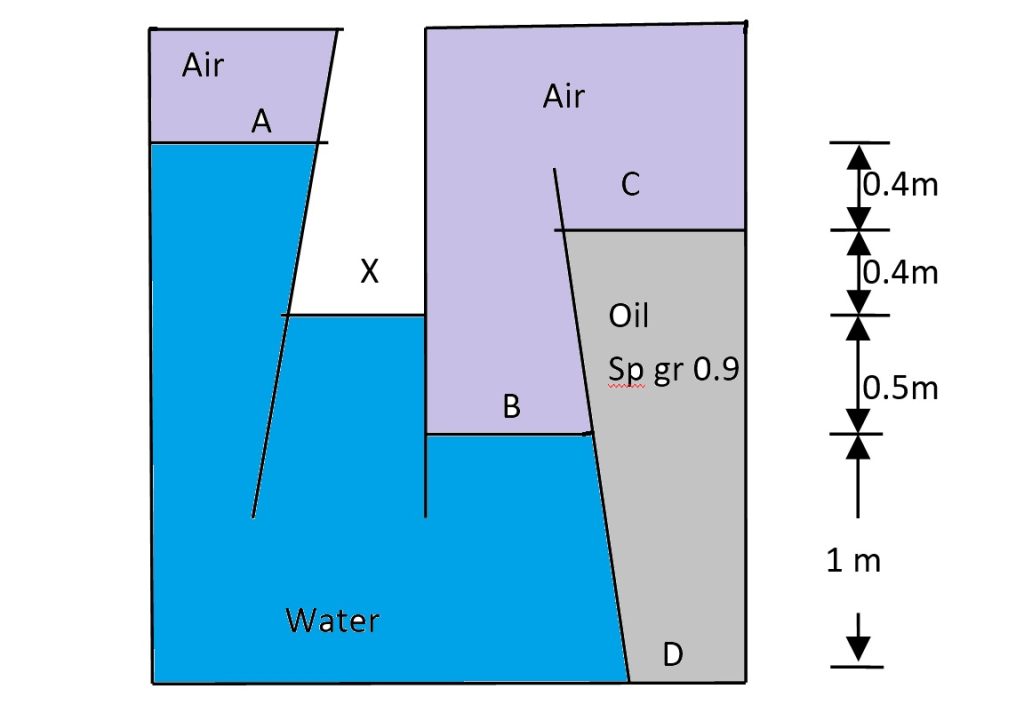Discharge Analysis of a Partially Submerged Rectangular Orifice
Problem Statement
A rectangular orifice of 1.5 m wide and 1.2 m deep is fitted in one side of a large tank. The water level on one side of the orifice is 2 m above the top edge of the orifice, while on the other side the water level is 0.4 m below its top edge. Calculate the discharge through the orifice if Cd = 0.62.

Given Data
| Width of orifice (b) | 1.5 m |
| Depth of orifice (d) | 1.2 m |
| Height of water above top edge (H1) | 2.0 m |
| Difference in water level on both sides (H) | 2.0 + 0.4 = 2.4 m |
| Height of water from bottom edge (H2) | H1 + d = 2.0 + 1.2 = 3.2 m |
| Coefficient of Discharge (Cd) | 0.62 |
Calculations
Step 1: Discharge through Partially Submerged Orifice
The discharge (Q) through a partially submerged orifice is given by:
Q = (2/3) × Cd × b × √(2g) × (H3/2 – H13/2) + Cd × b × (H2 – H) × √(2gH)
Substituting the given values (using g = 9.81 m/s²):
Q = (2/3) × 0.62 × 1.5 × √(2×9.81) × (2.43/2 – 2.03/2) + 0.62 × 1.5 × (3.2 – 2.4) × √(2×9.81×2.4)
Evaluating the expression yields:
Q ≈ 7.55 m³/s
Conclusion
The discharge through the partially submerged rectangular orifice is approximately 7.55 m³/s.


